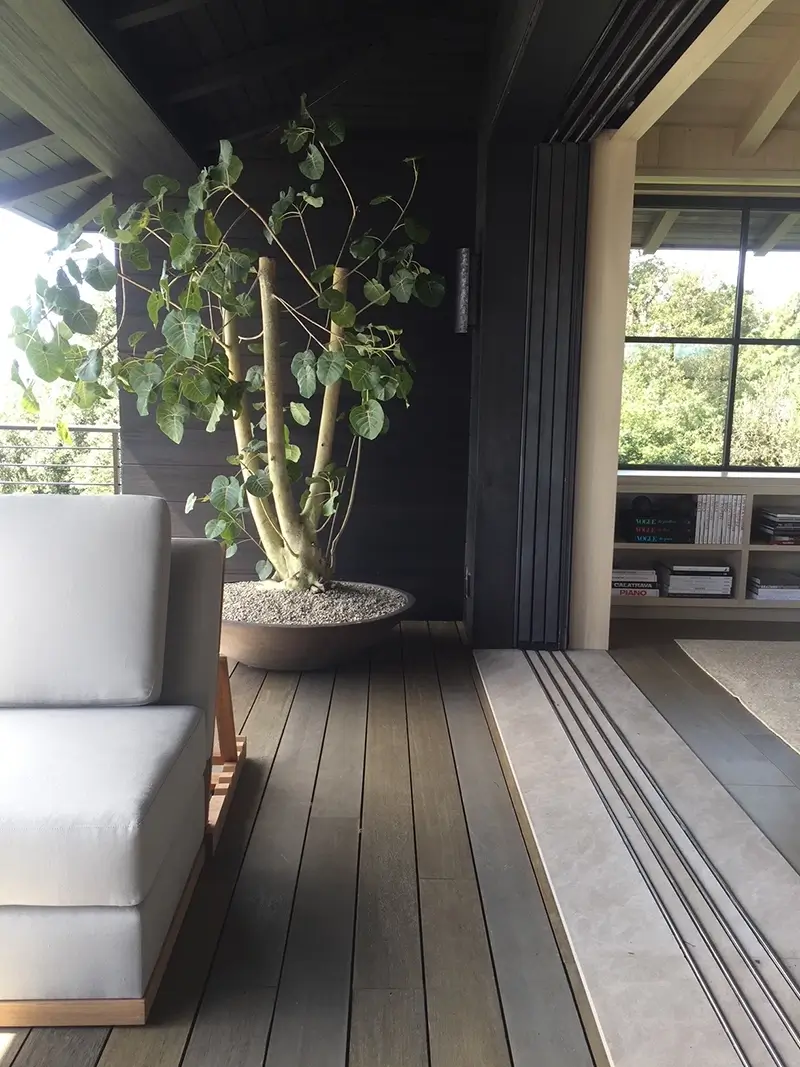
The Wisdom of Simplicity and Wabi Sabi
Nestled along Malibu’s lush coastline, Inner Gardens’ Stephen Block and Kimberlee Keswick curated a selection of unique, sculptural plants in warm-toned antique, vintage, and mid-century planters, transforming the terrace into a serene, wabi-sabi-inspired retreat.
“Pare down to the essence,
but don’t remove the poetry.”
-Leonard Koren
Set against the backdrop of an impressive home by prolific architect Scott Mitchell, this project reflects his signature blend of clean lines, glass, metal, and concrete. Drawn to the allure of Japanese Zen gardens, the client entrusted Inner Gardens with transforming their terrace into a space of tranquility. To introduce a wabi-sabi aesthetic, Inner Gardens incorporated neutral, tonal color palette via natural materials—wood and clay—rich with patina and paired with a refined selection of specimen plants.
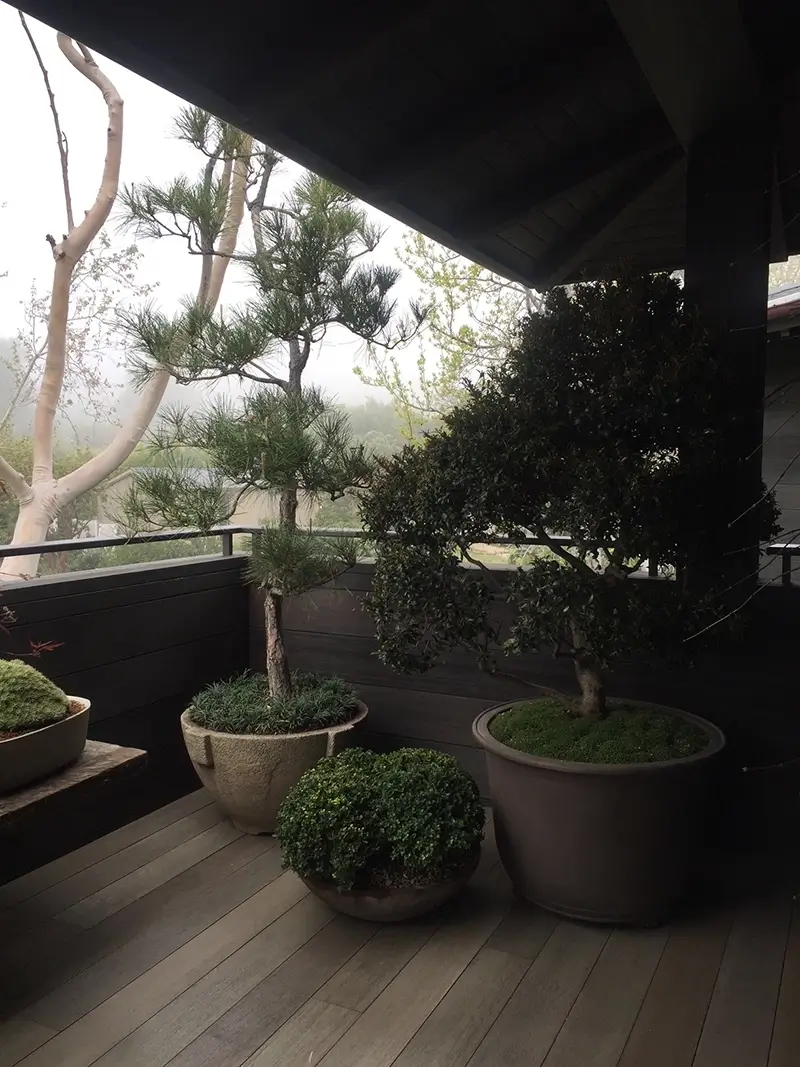
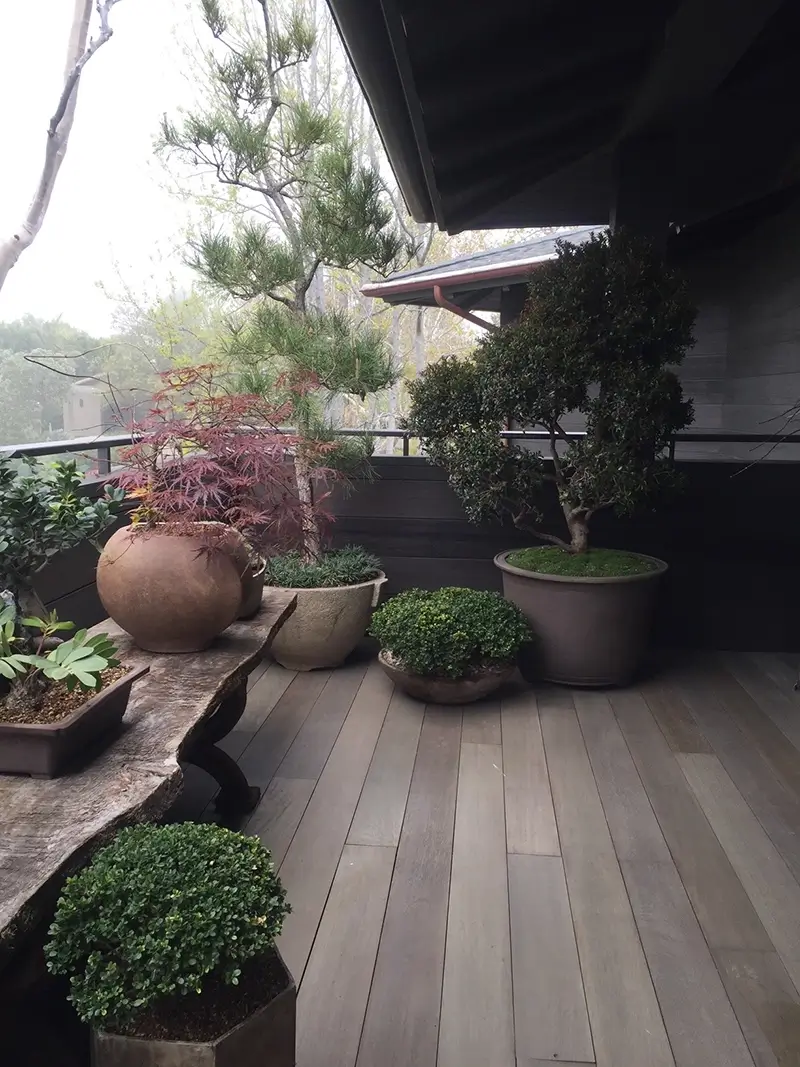
Wabi-sabi’s roots trace back to Chinese, Japanese and Zen Buddhist philosophy, which emphasizes simplicity, the beauty of aging and imperfection. At its essence, nothing stands out boldly on its own; rather, beauty emerges from the harmony of elements. Block and Keswick’s sculptural plant selections embody this philosophy—pines, maples, small bonsai-style trees, Zamia, and a rare Kingsville boxwood with its delicate leaves. These were placed in an exceptional collection of Hibachi planters and Japanese clay vessels sourced from the Inner Gardens showroom.
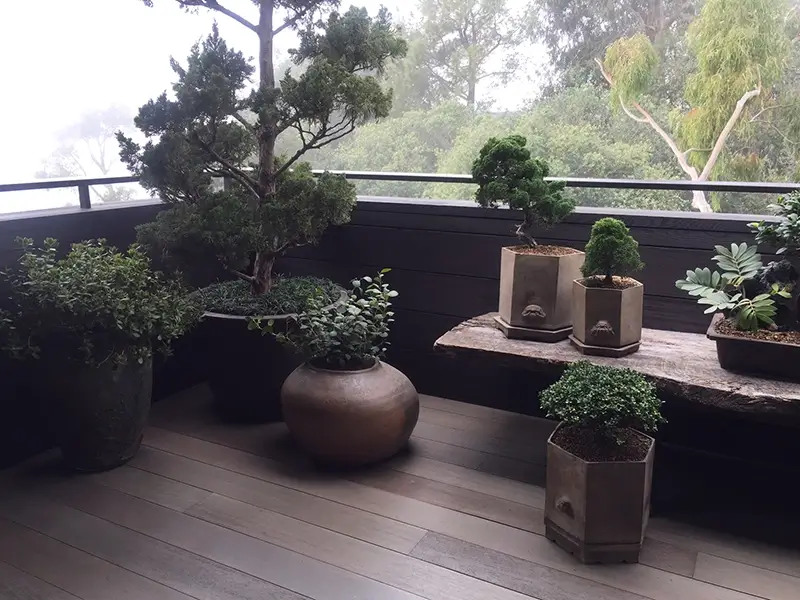
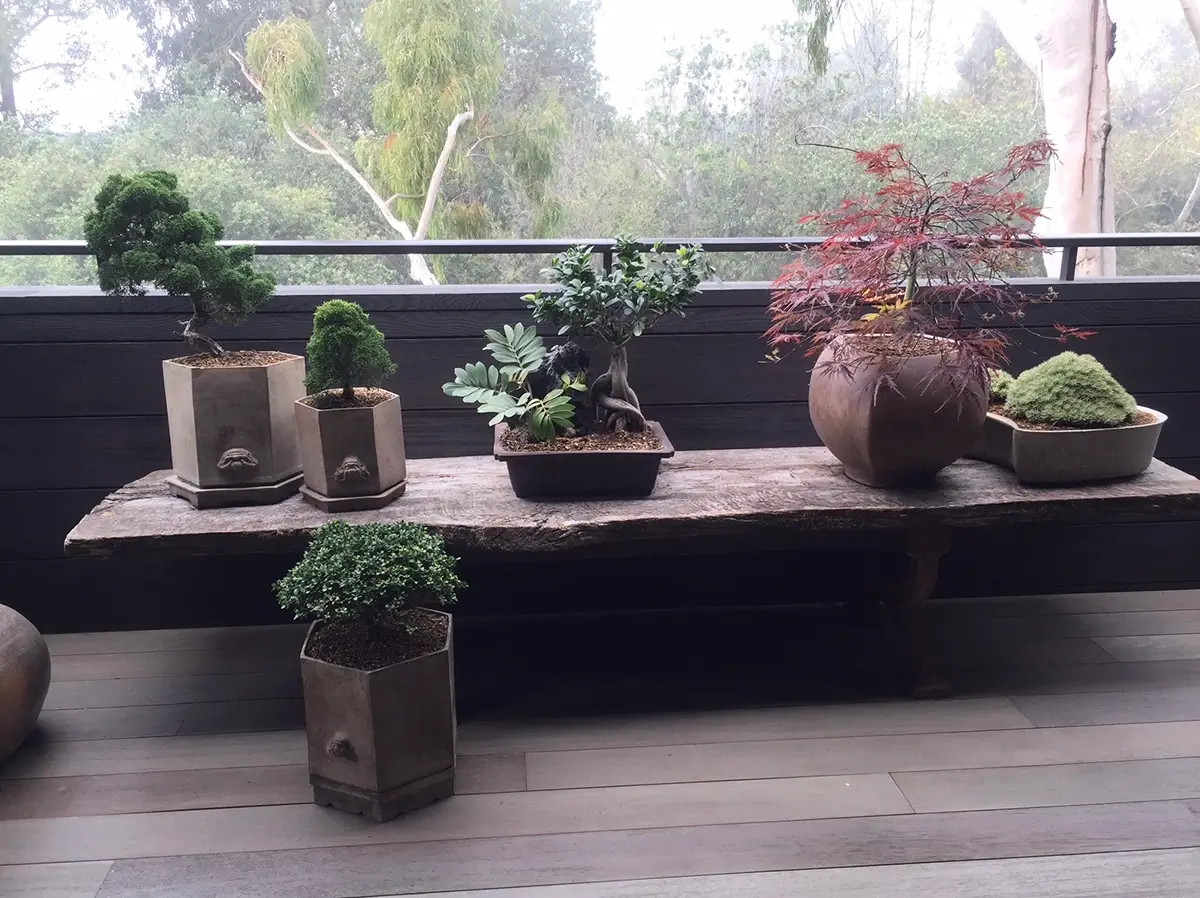
Overlooking towering pine trees and a vast expanse of sea, the terrace is particularly mesmerizing when coastal fog rolls in. The home’s setting is inherently imbued with the wabi-sabi aesthetic, where nature’s ever-changing landscape only deepens its beauty.
A rustic wooden bench with a rich patina and metal footing, sourced from France, anchors the terrace. The color palette revolves around warm earth tones, complemented by the textures of aged wood, patinaed metals, and clay pottery, creating a cohesive and peaceful environment.
The philosophy of Wabi-sabi is deeply ingrained in Japanese culture and embodies the ephemeral nature of existence. Keswick emphasizes how, “There’s an interconnectedness woven into Japanese culture, into its art, philosophy, design, architecture, gardens, and even within the social fiber. It’s the old with the new.” Her use of bonsai-style trees and the contorted old roots and trunks of pines and maples pays homage to this rich tradition.
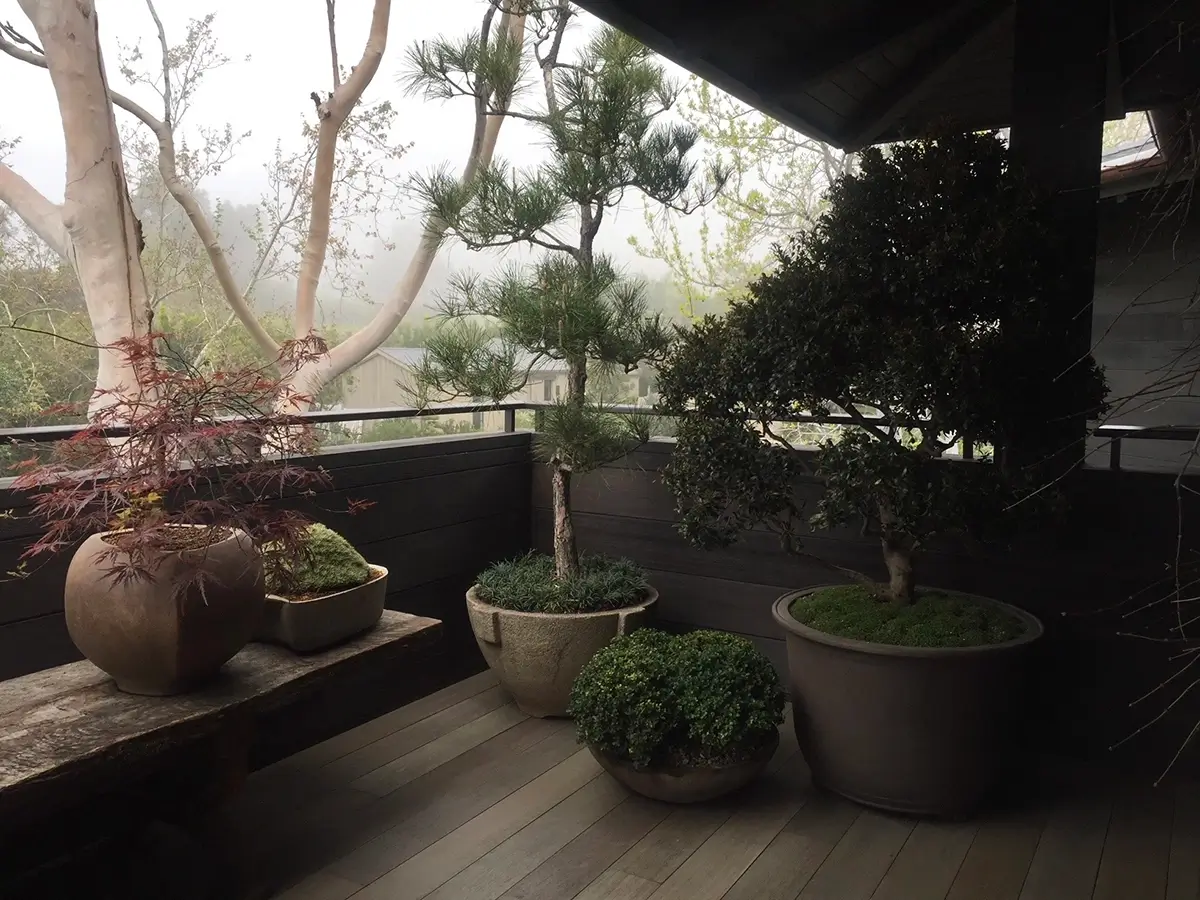
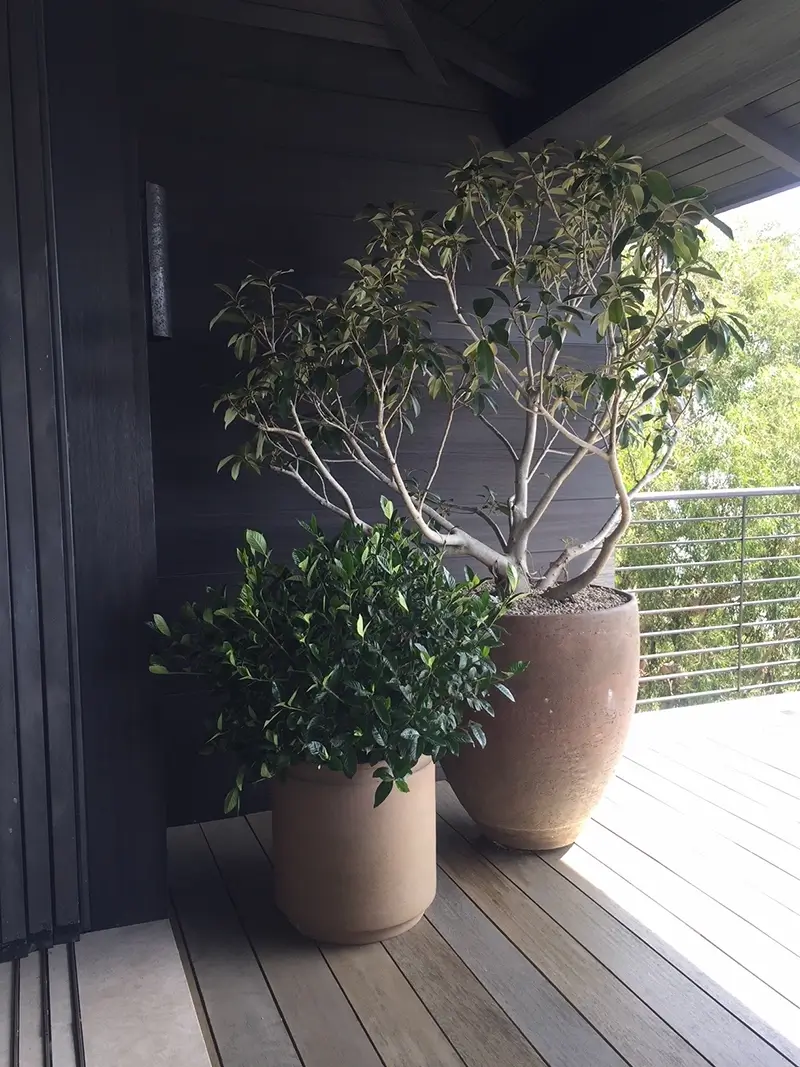
Ultimately, this coastal haven became a meditative retreat, where nature and the artistry of design converge seamlessly. As Keswick aptly summarizes, “It’s a serenely contemplative terrace space, where you at once feel connected to nature and, at the same time, transported to another place.”
